Honda GB350 Review
I knew absolutely nothing about the GB350 before my initiation with the model last week in Melbourne, thus went in with no real preconceptions. And no, that is not a typo, this is a GB350 and not a CB350…
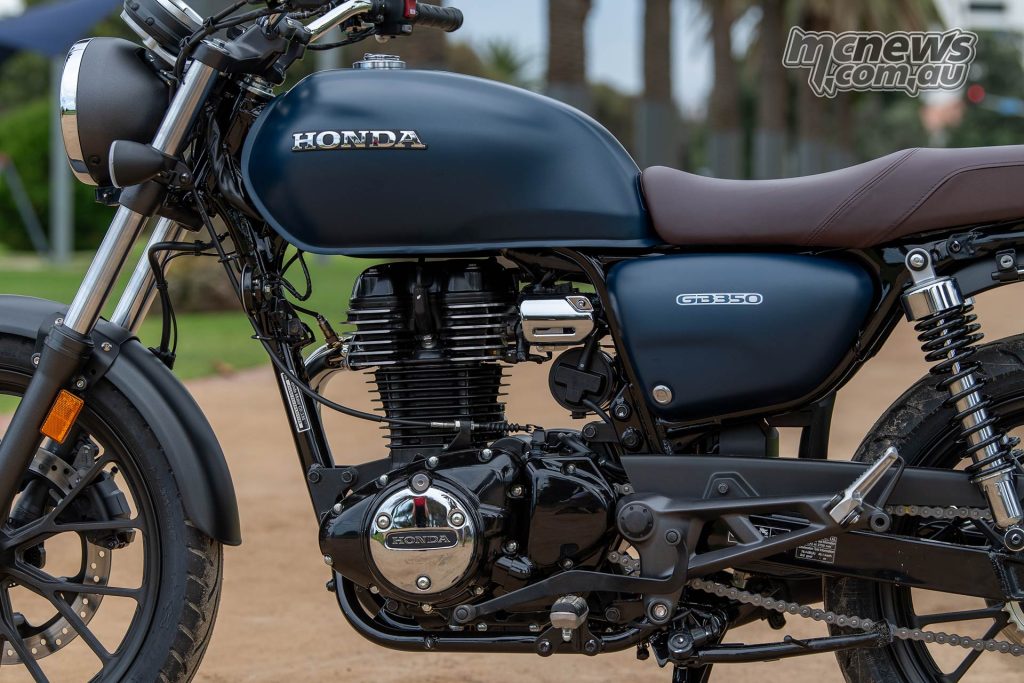
While this Japanese-made motorcycle has been trying to one-up Royal Enfield in their home market of India for a couple of years as the CB350, for the Japanese market, and ours, Honda has chosen the GB350 moniker.
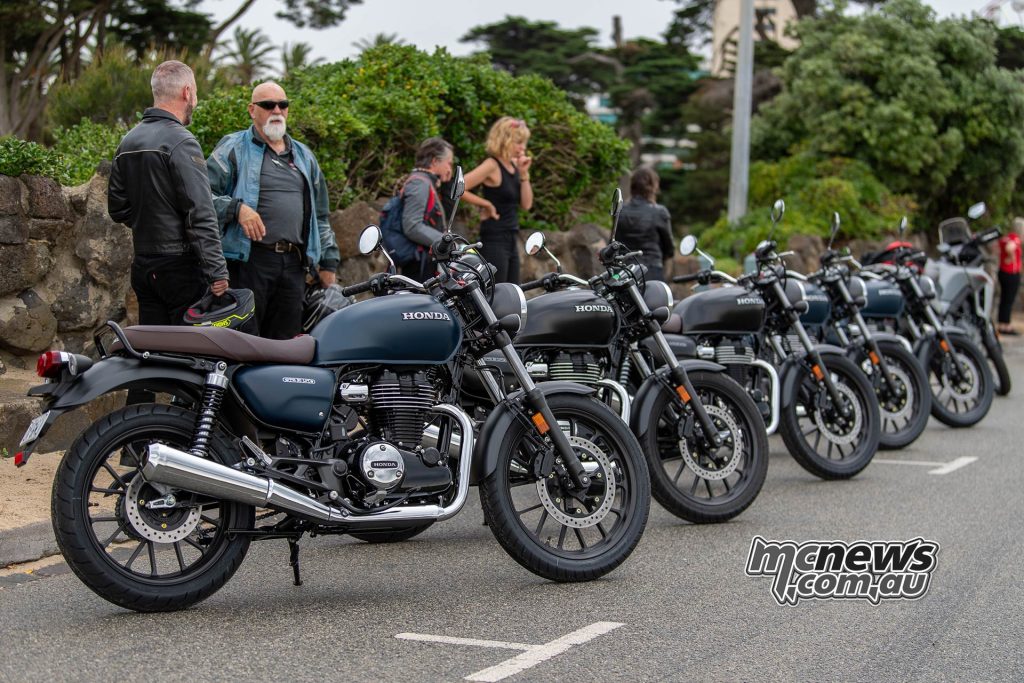
At $6999 plus on-roads the ride away price of the GB350 comes in around $8K, complete with 12 months rego. That price puts it on pretty level pegging with Royal Enfield’s 350 cc options.
The launch point for our day in and around Melbourne with the GB350 was the Honda Australia Rider Training Centre in Somerton, and it was there that I laid eyes on the GB350 for the first time.

I have got to say I was pleasantly surprised. The matt blue coloured bikes with the tan seat looked particularly tasteful and was my pick from the two options on offer, the second being matt black, also with a tan seat.
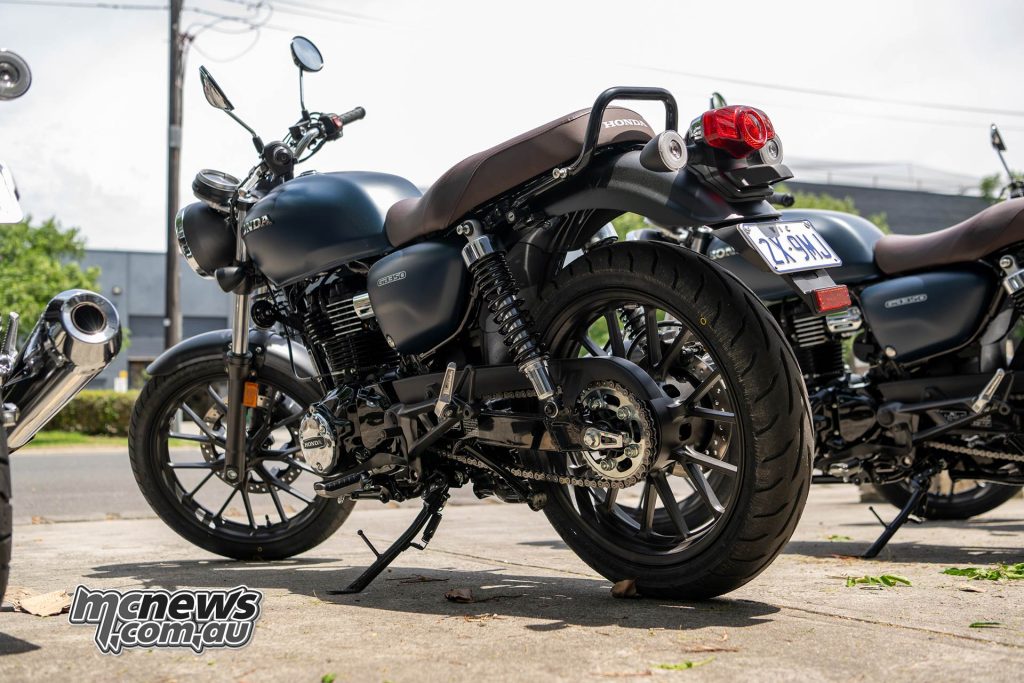
The lines of the bike are classic. From the shape of the tank to the small painted side covers, through to the conventional forks, twin shocks and the sweep of the exhaust, it all looks just right.
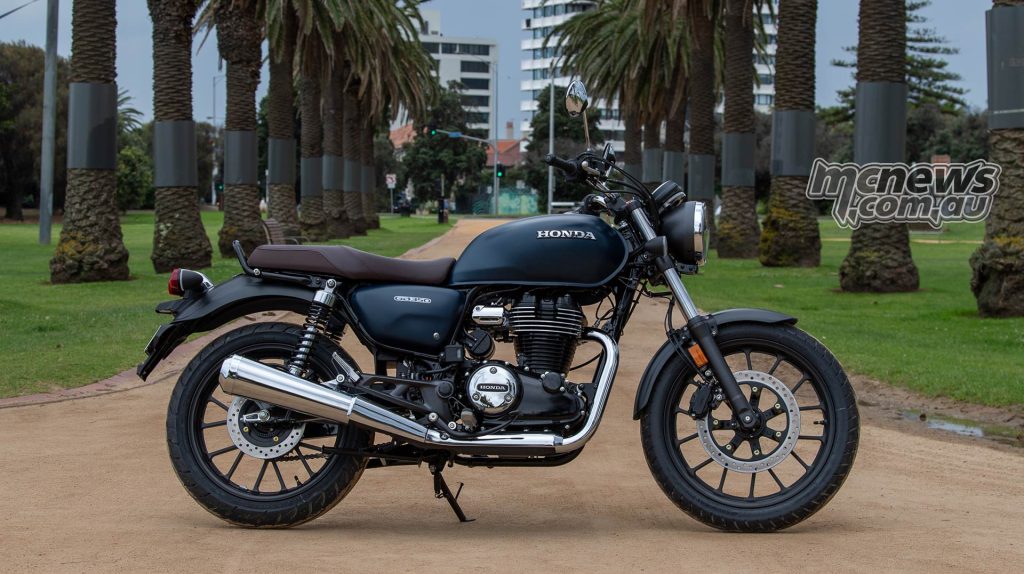
To my eye, it is a much better-looking motorcycle than most of its rivals.

The 348 cc single that powers the GB350 is not a hand-me-down from another model, or a reengineered take-on a single once used in their ATV line-up, but is an all-new powerplant designed from the ground up for this model. That said, it is still a fairly basic air-cooled two-valve engine with a low 9.5:1 compression ratio.
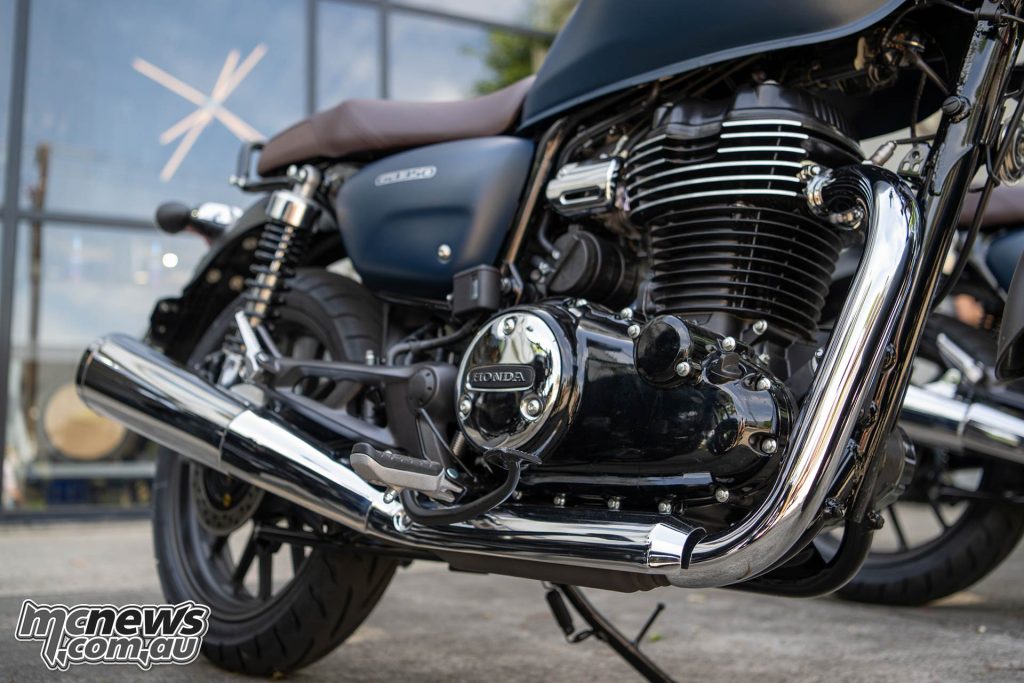
Japanese horses obviously have bigger hoofs than their Indian counterparts as despite claiming a similar 20 horsepower to Royal Enfield’s 350 single, the Honda’s performance is superior. The Japanese bikes’ peak power, while comparable, arrives a little sooner thanks to a longer stroke.
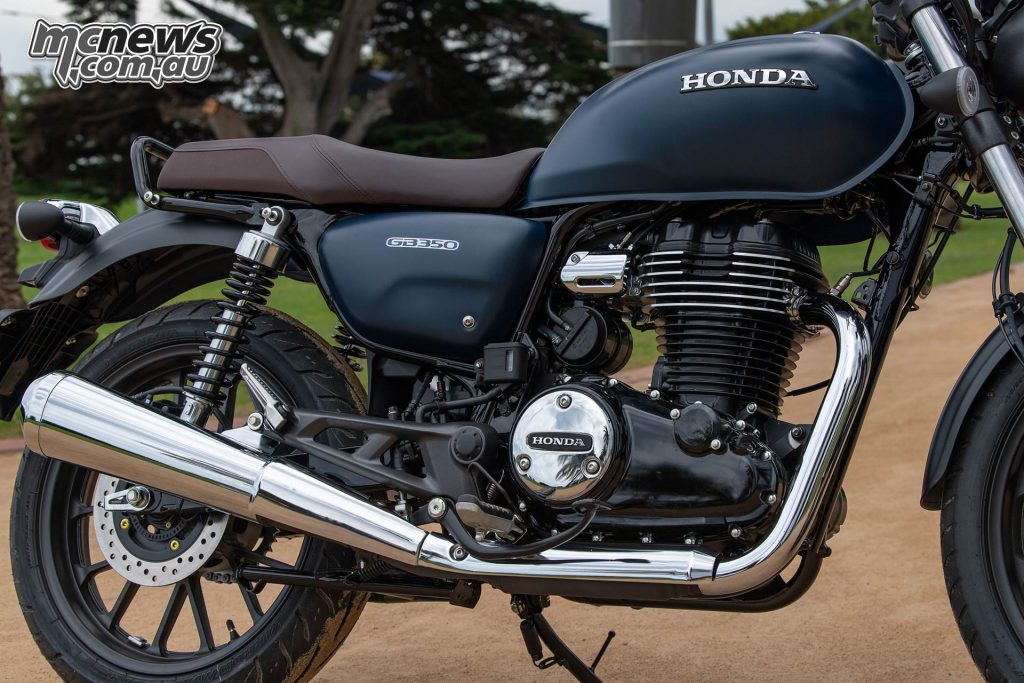
However, the GB350 boasts around 10 per cent more torque than the Indian option and, in my experience, the Honda gets to 100 km/h and sustains that pace much easier than its competitor. And that was despite my test bike having a grand total of only seven-kilometres on its odometer at the beginning of the day. The smell of the paint on it still curing an affront to my olfactory system as I negotiated Melbourne traffic.
Getting away from the lights in a reasonably brisk fashion ahead of most traffic is an easy task. On the highway 100 km/h came up easily enough. While an engine like this has to give its all just about all of the time, it never felt as though it was harsh or straining. Even when back-shifting to third gear at 100 km/h to try and sustain that speed uphill, the engine didn’t feel stressed. Absolute outright top speed, if you have enough patience to get there, is around 130 km/h.
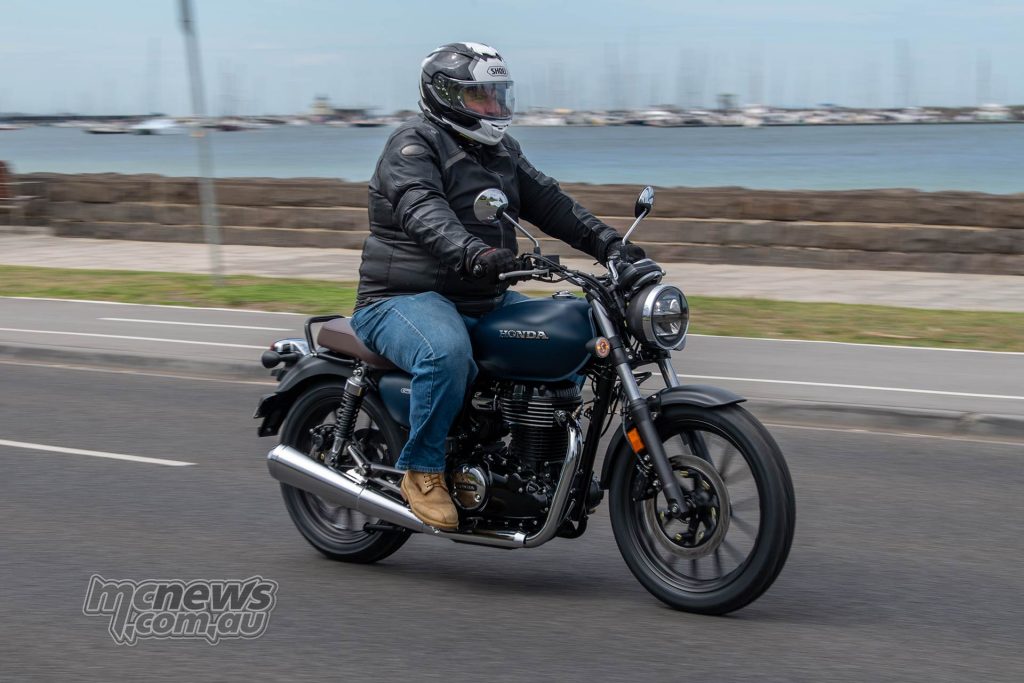
I should add though that this new Honda 350 single, and Royal Enfield’s comparable 350 single for that matter, would get smoked by any 350 cc scooter when it comes to acceleration or even top speed. Honda’s own Forza 350 scooter would leave it for dead. Thus if city practicality and performance in the cut and thrust of urban traffic is your main aim, a scooter is the smarter choice, especially when considering the amenity of their generous integrated underseat storage. They don’t look as cool, but scooters are hard to beat for urban commuting. Just putting that out there primarily for the uninitiated, to help them make a more informed choice for their needs.
The gearbox on the GB350 itself works smoothly enough through its five cogs and while at times the gearing seems way too long, I am not sure any gains would be made by playing with ratios. The clutch is light and is of the slip-assist variety.

Despite the uncomfortably warm ambient temperatures we experienced, I never felt any heat generated from the air-cooled engine making its way up to me. That’s a big plus on summer commutes.
Traction control is standard and switchable. You would be doing well to get the GB350 to break traction.
As to fuel economy, well when I first jumped on the bike it told me I had a range of 417 kilometres from the 15-litre tank. 10 kilometres later it told me the range was now over 450 kilometres, and a further 10 kilometres down the road the indicated range was more than 550 km!
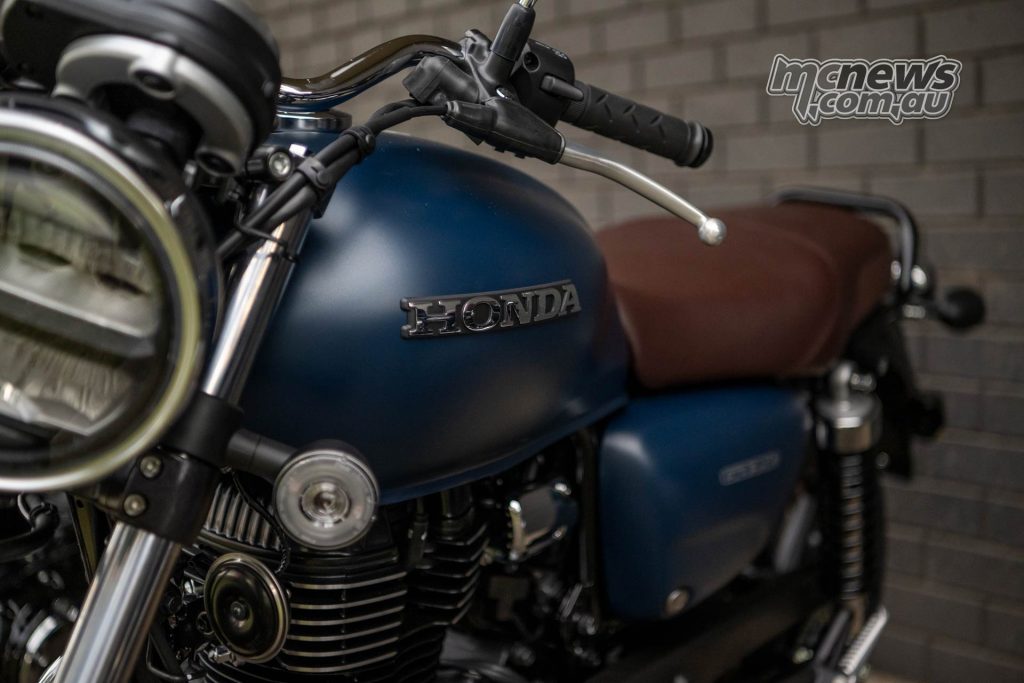
The range to empty finally started going down again later in the day while battling incredibly blustery winds amongst heavy traffic on the Western Ring Road at 100 km/h in 33-degree heat. To be honest this was pretty brutal going in the cut and thrust of traffic at this speed. I would certainly have appreciated a lot more power on tap when being sandwiched between semi-trailers, to point and squirt into safer gaps.

But that experience also did take me back to my yoof, when I was completely reliant on two-wheels for transport. In the late 80s, at the age 16 in Perth, I could get on a 50 cc moped. I counted down the days and as soon as I was of age I did the written and practical riding examinations out at Welshpool, and was shortly thereafter terrorising the southern suburbs on a second-hand two-stroke Motobecane 50.
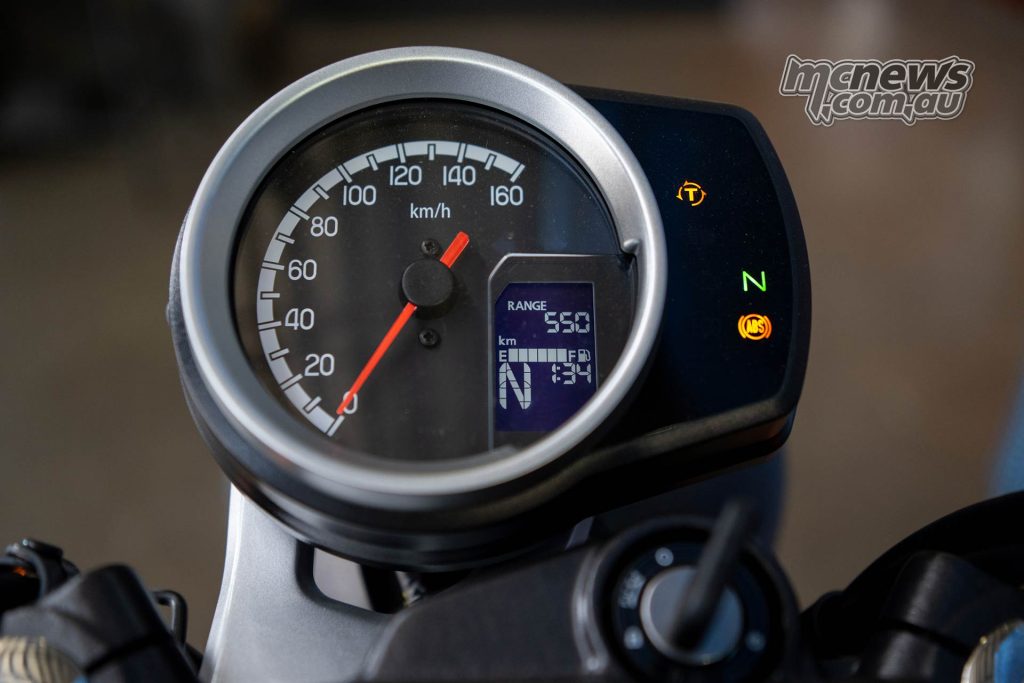
The graduations on the conventional needle style speedometer on the GB350 also took me back to those days. Thankfully though I had no need to take to the Honda with a hammer and screwdriver to get the magneto cover off by the side of the road to adjust the points, like I had to do way too often on the French piece of shit I started out on. I guess it did at least teach me some basic early mechanics… And the PGM-FI system on the Honda of course means no points and no jets.
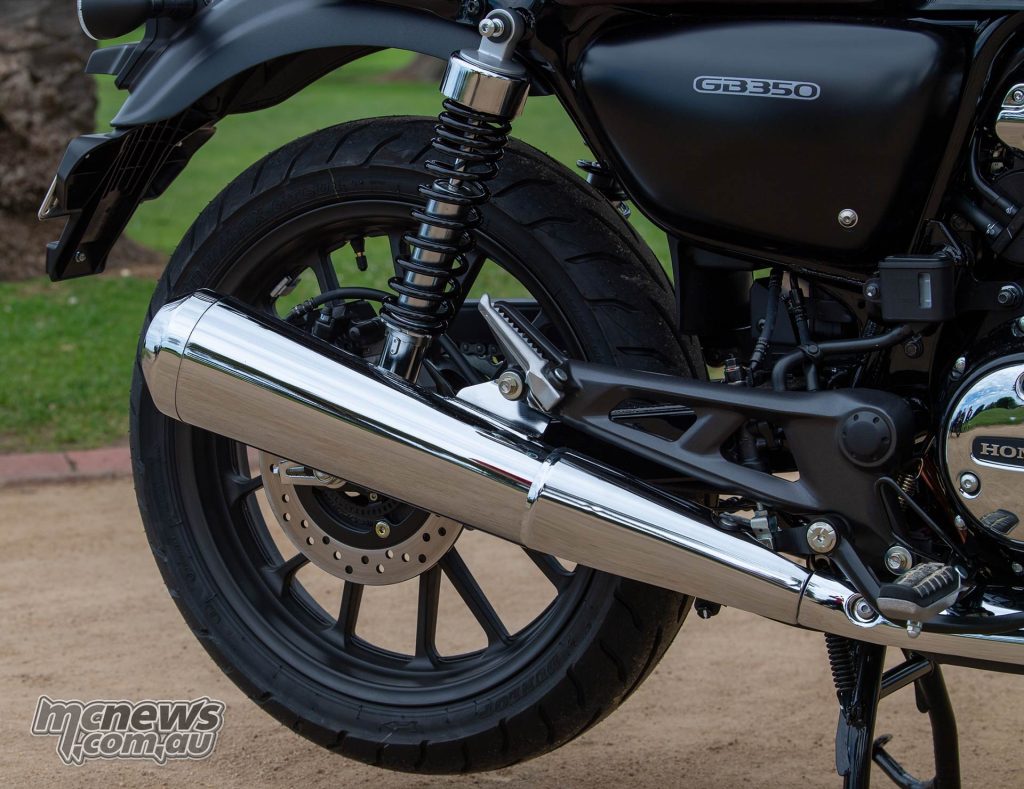
On start-up the single-cylinder mill actually has quite a nice timbre to it, and when pulling away onlookers get to enjoy a nice plodding burble. However, with the exit of that handsome exhaust so rearward none of that sound meets the riders ears once on the move.
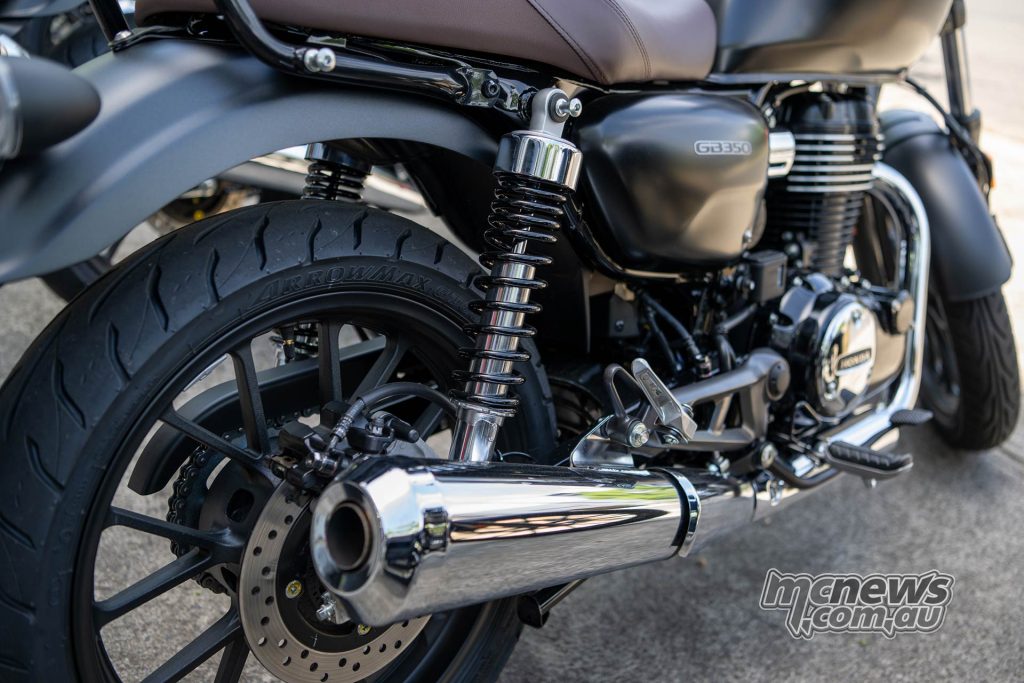
The little LCD inset in the single round binnacle is surprisingly useful and legible. A fuel gauge, time, gear position indicator and range to empty all available at a glance, with odometer and trip meter functions cycled through via glove friendly buttons on its perimeter.

The lighting is all LED but retro-styled. I am in two minds as to how much I like it, I have seen worse efforts that’s for sure.
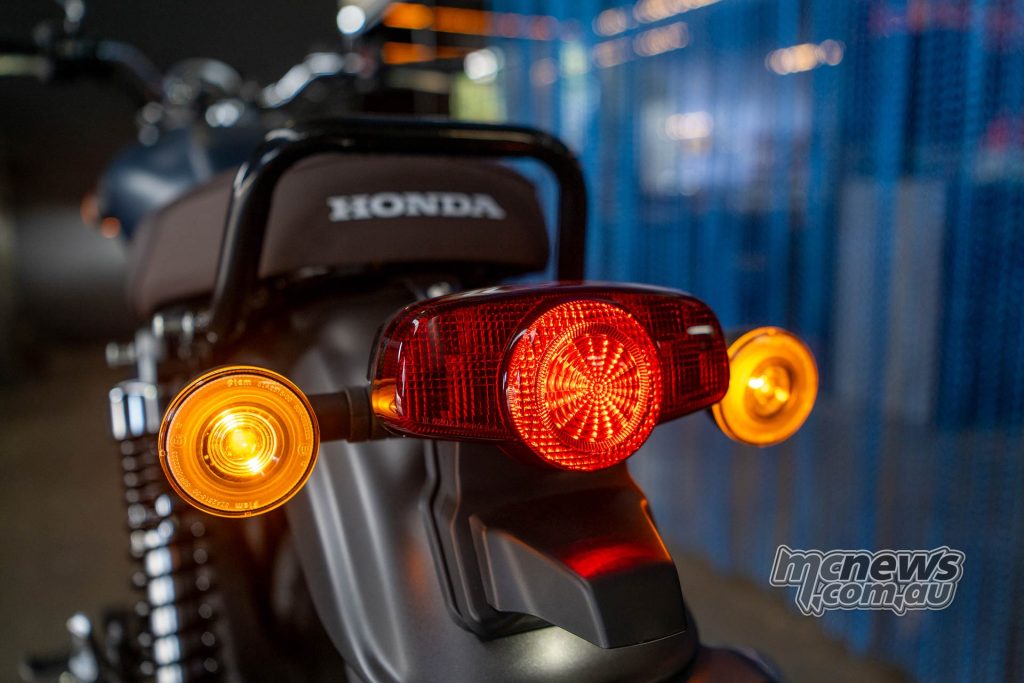
The only real miss to my mind is not managing to hide the emissions canister, as it sticks out like dog balls beneath the throttle body.

I also think the alloy support bracket for the pillion pegs and exhaust hanger doesn’t really fit the look, but I am starting to get picky now.

I don’t even mind the look of the mirrors, which also work pretty well by the way.
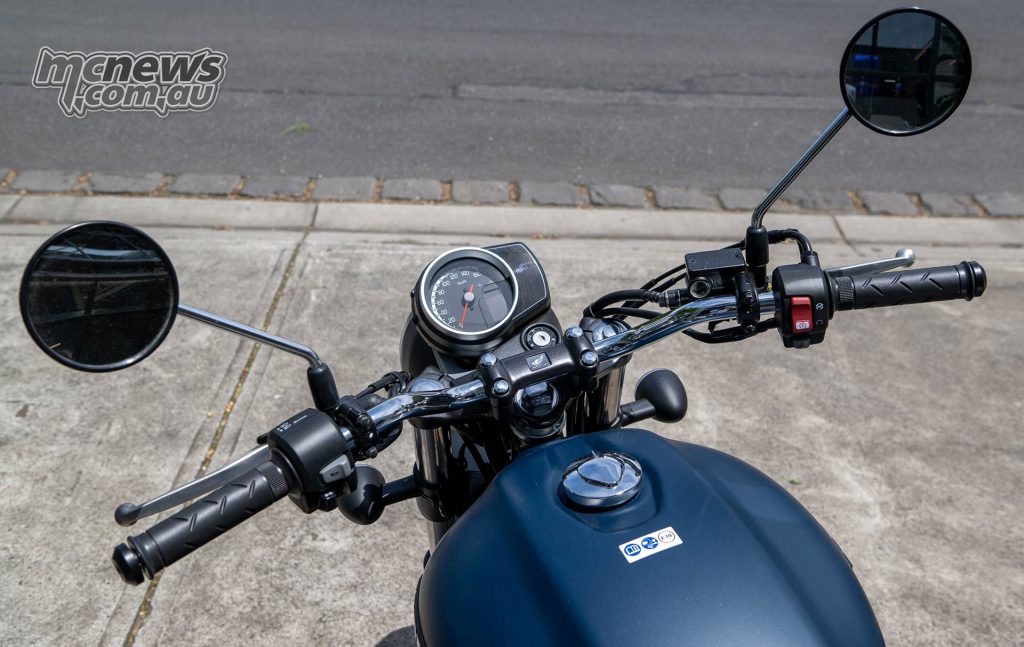
I am sure the persons responsible for the design of the motorcycle were not the same team that designed the accessories as the optional luggage, sissy bar and small windscreen all missed the mark for me on the styling front.
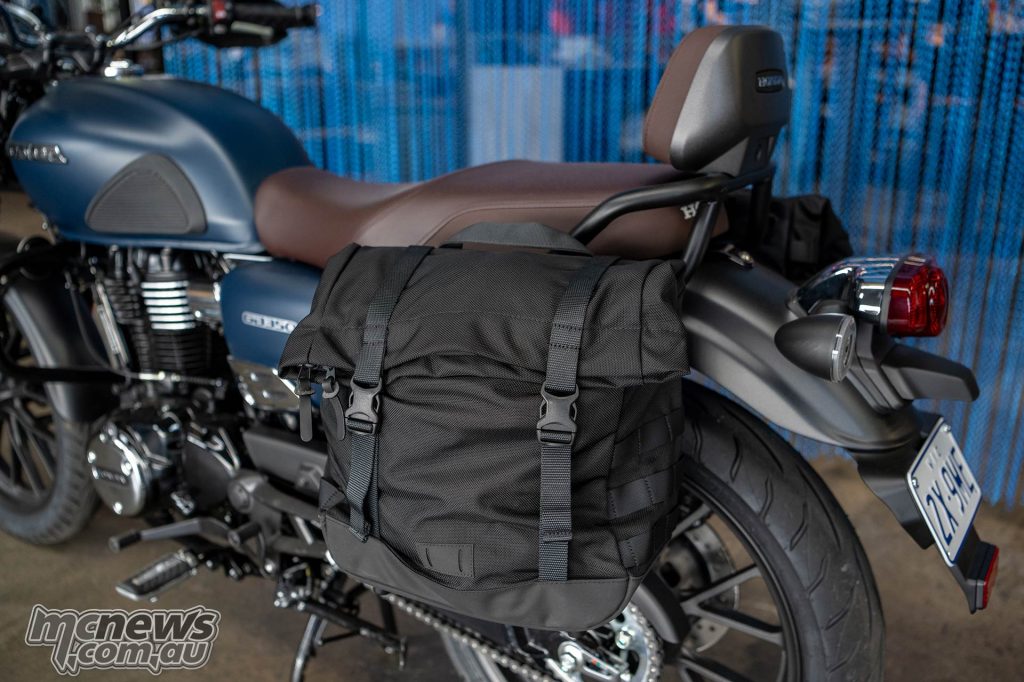
It took me quite a while to gel with the switch-gear, I started out hitting the horn when trying to indicate. Self-cancelling indicators would have been nice too.

The seat height is 800 mm and thanks to its narrow girth and single-piece design with a lack of too much rise at the rear for the pillion, throwing a leg over the GB350 is a no-effort affair. The seat is pretty well padded, and no doubt riders lighter than I would find it more comfortable than I did. Overall the ergonomics feel natural enough and left me little reason to complain, and I do complain a lot…
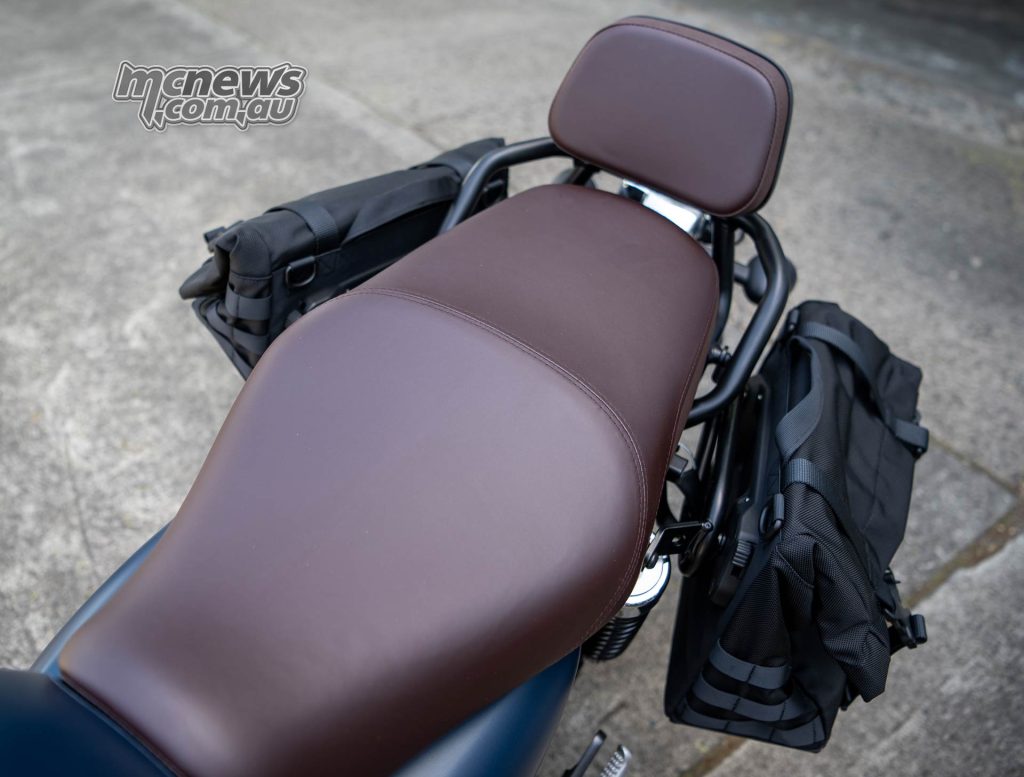
The single-disc front end offers reasonable stopping power via a Nissin twin-piston caliper and 310mm rotor backed up by ABS. At some points, I would have appreciated a little more power at the lever, but then that would have only overwhelmed the forks so, on balance, as a package it all gels well enough for a fuss-free easy ride. The rear disc is a modest 240 mm item but offers reasonable power.

While most bikes of this genre, and the originals they are styled from, rode on spoked rims, the alloys on the GB350 suit the bike very well. They are shod with a tubeless 100/90-19 Dunlop up front and 130/70-18 at the back. These tyres were first introduced in 2019 and the profile/tread pattern is a mix of modern and retro. The shoulders of the Arrowmax GT601 are more chamfered than bikes of this style would have run back in the 70s, and that helps make for much sharper turn-in than bikes of old.
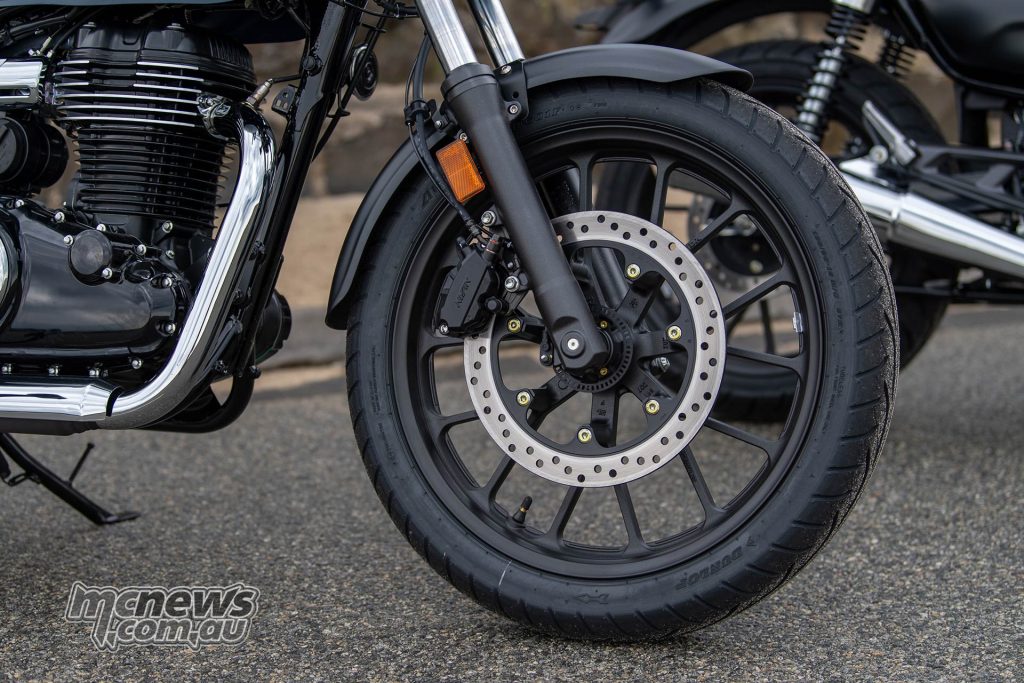
While the suspension is basic and fairly low-spec, I found the damping control better than expected. The non-adjustable forks slide through a stroke of 106 mm while the pre-load adjustable twin-shock rear ends offers a more generous 120 mm of travel. It coped with my plus-size arse surprisingly well. That travel is enough to deal with all but the most shitful roads in Victoria. I say ‘most’, as they are currently all in such a shameless state of repair that they are virtually all shitful. It also means that kerb hopping is a reasonable enough proposition along with all manners of city motorcycling parkour.

I was touching my boots down in corners until I positioned my clogs a bit higher and more rearward on the pegs. I am not sure I would be all that keen scraping the pegs and centre-stand at 100 km/h, it’s not really designed for that, but if I was 17 again I would be, no doubt about it…
That centre-stand will make home maintenance a breeze and on that note, servicing is required every 6000 kilometres to maintain your two-year unlimited kilometres warranty.
It is also recommended that valve clearances are to be checked at the same interval. That does sound a bit over the top to me, especially on such a low-revving motor, and is no doubt just Honda being Honda, that is overly cautious. However, access looks easy and there are only two valves to check…

If the overseas experience is anything to go by, we suspect there will be a couple more spin-offs from the GB350 arriving soon enough. One a little more laid back, and another with slightly sportier styling.
Overall my first take on the GB350 is very positive. It is a basic but competent motorcycle at an affordable price point.
But the standout feature is by far the timeless styling. I genuinely think that the GB350 is one of the nicest-looking motorcycles to hit the market in recent years. They are flying off the showroom floors in Japan, going to be interesting to see the take-up rate here. It will sell well on looks alone I am sure.
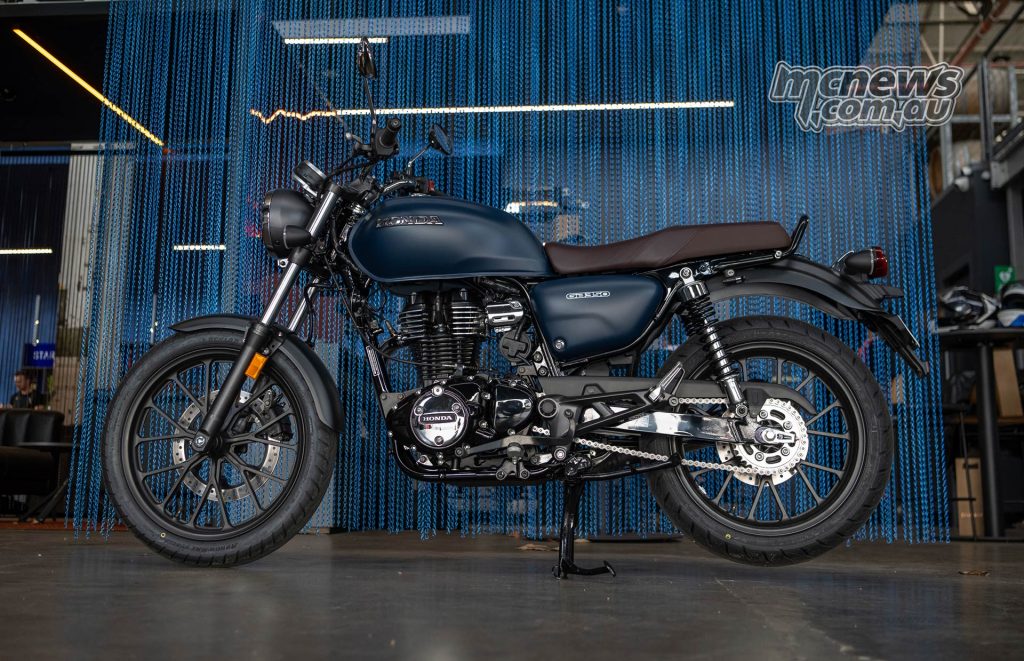
Honda GB350 Specifications
| Honda GB350 Specifications | |
| Engine Type | Air-cooled four-stroke, two-valve, single-cylinder |
| Capacity | 348 cc |
| Bore & Stroke | 70 mm x 90.5 mm |
| Compression Ratio | 9.5:1 |
| Claimed Power | 20.8 hp at 5500 rpm |
| Claimed Torque | 30 Nm at 3000 rpm |
| Starter | Electric |
| Fuel System | Fuel Injection |
| Transmission | 5-speed |
| Drive | Chain |
| Overall Length | 2,163 mm |
| Overall Width | 800 mm |
| Overall Height | 1107 mm |
| Wheelbase | 1,441 mm |
| Seat Height | 800 mm |
| Ground Clearance | 166 mm |
| Fuel Capacity | 15 L |
| Kerb Weight | 181 Kg |
| Tyres (F) | 100/90-19 |
| Tyres (R) | 130/70-18 |
| Front Suspension Type | Inverted telescopic fork, 106 mm travel, non-adjustable |
| Rear Suspension Type | Twin shocks, 120 mm travel, pre-load adjustable |
| Brakes (F) | 1x 310mm disc, ABS |
| Brakes (R) | 1x 240mm disc, ABS |
| Warranty | 24 months |
| Service Intervals | 6000 km |
| RRP | $6999 +ORC |
Honda GB350 Gallery











































































